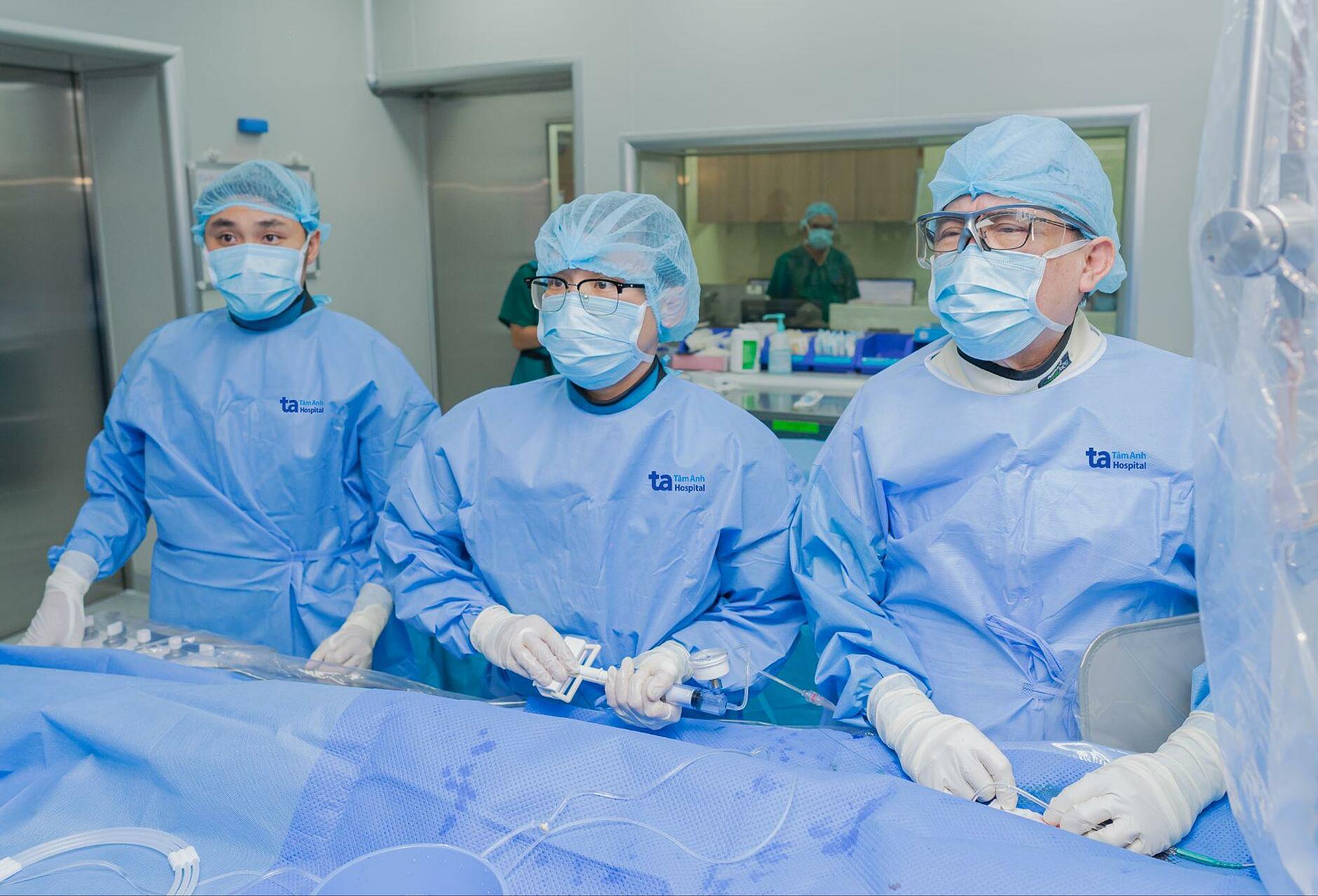Mr. Tu smoked for 50 years and exercised daily. For six months, he often had chest pain lasting 10-15 minutes, considering it normal and not seeking medical care.
Doctor Vu Dinh Chanh, a First-Degree Specialist in the Emergency Department at Tam Anh General Hospital TP HCM, reported Mr. Tu was admitted conscious with stable pulse and blood pressure, experiencing distinct chest pain. An electrocardiogram revealed signs of hyperacute myocardial infarction.
Laboratory tests showed high-sensitivity Troponin T (hs-Troponin T) levels at 41,8 ng/L, three times the normal range. Troponin, a specific cardiac muscle protein, elevates in the blood when heart muscle is damaged by infarction, aiding in acute myocardial infarction diagnosis. The patient's NT-proBNP index also rose to 589,6 pg/mL (normal ≤125 pg/mL), indicating cardiac stress, potential heart failure, or circulatory overload, often associated with myocardial infarction.
Doctors prescribed dual antiplatelet therapy and high-dose statins, closely monitoring for complications. Coronary angiography revealed two branches of the left coronary artery occluded by thrombi, with another branch experiencing 30-40% stenosis. Emergency intervention was initiated. Doctor Nguyen Van Duong, a Second-Degree Specialist at the Interventional Cardiology Center, performed the procedure by inserting a catheter through the right radial artery, conducting angioplasty, and implanting two drug-eluting stents to restore Mr. Tu's blood flow.
 |
The team performs emergency stent placement for a myocardial infarction case. Illustration: Tam Anh General Hospital |
Following the intervention, Mr. Tu's heart pumping function improved, with an ejection fraction (EF) of approximately 55-58%. He no longer experienced chest pain or shortness of breath and continued on anticoagulant and dual antiplatelet medications. He was discharged after one week of treatment and scheduled for regular follow-up appointments.
Doctor Duong advised patients to adhere strictly to treatment, avoid discontinuing medication without medical consultation, and adopt lifestyle changes such as quitting smoking to manage blood lipids and blood pressure, thereby preventing future cardiovascular events.
Chest pains persisting for months, particularly those triggered by exertion like cycling or climbing stairs, signal potential coronary artery disease. Patients experiencing recurrent chest pain, especially during physical activity, should consult a cardiologist promptly. For severe chest pain accompanied by profuse sweating and shortness of breath, individuals must cease all activity and call emergency services at 115 for immediate transport to the nearest hospital.
According to the World Health Organization (WHO), cardiovascular disease remains the leading global cause of death, accounting for approximately 19,8 million fatalities in 2022, or 32% of all deaths. Of these, 85% resulted from myocardial infarction and stroke. Major risk factors include unhealthy diets, physical inactivity, smoking, and excessive alcohol consumption, which contribute to high blood pressure, elevated blood sugar, dyslipidemia, and obesity.
Cardiovascular disease often progresses silently, with many cases only diagnosed after a myocardial infarction or stroke, presenting symptoms like chest pain, shortness of breath, nausea, or hemiplegia, speech difficulties, blurred vision, and loss of balance. Prevention requires lifestyle changes and managing underlying conditions such as hypertension, diabetes, and dyslipidemia.
Nhat Thanh
*The patient's name has been changed
| Readers can submit questions about cardiovascular disease here for doctors to answer |












